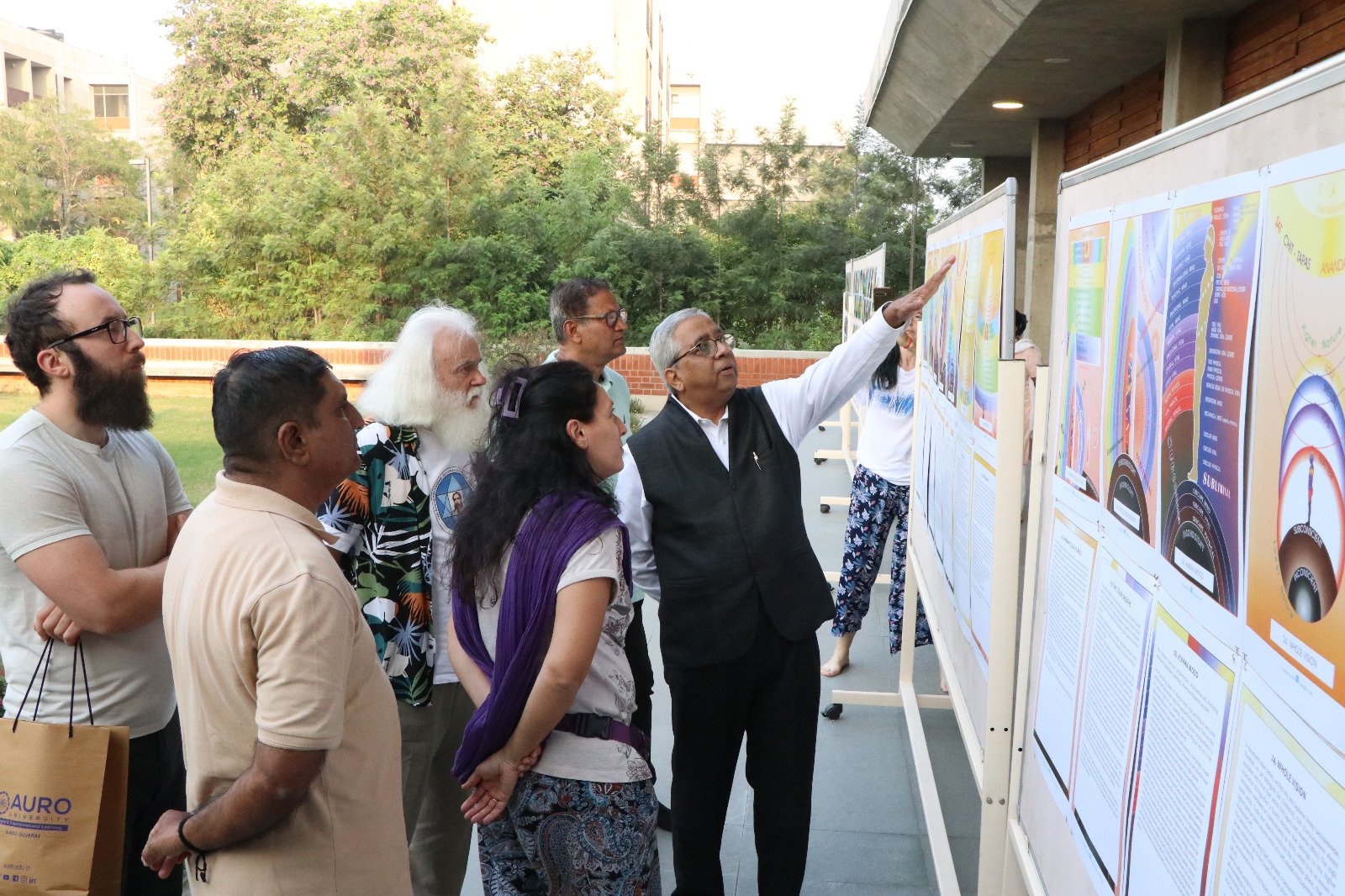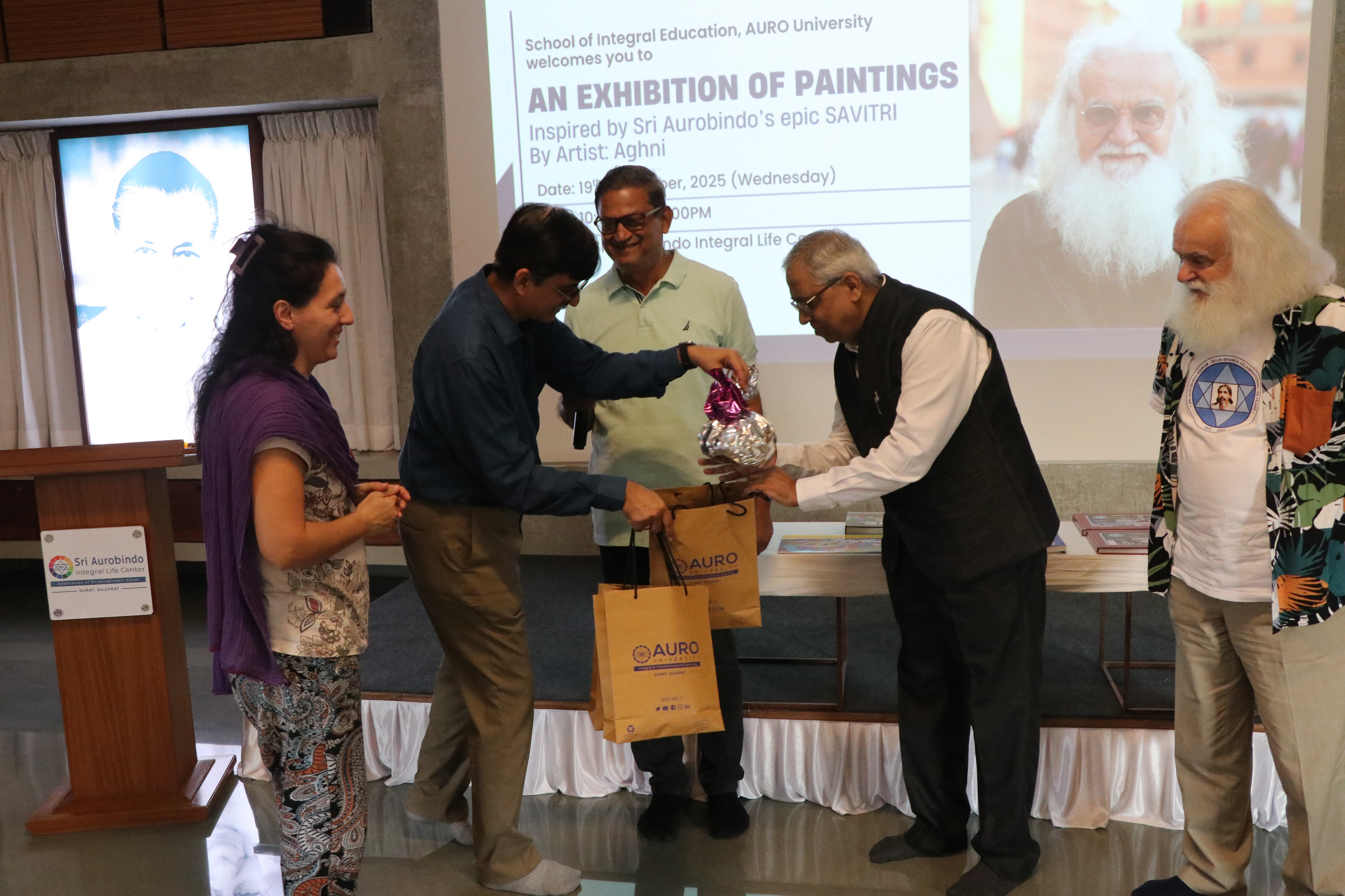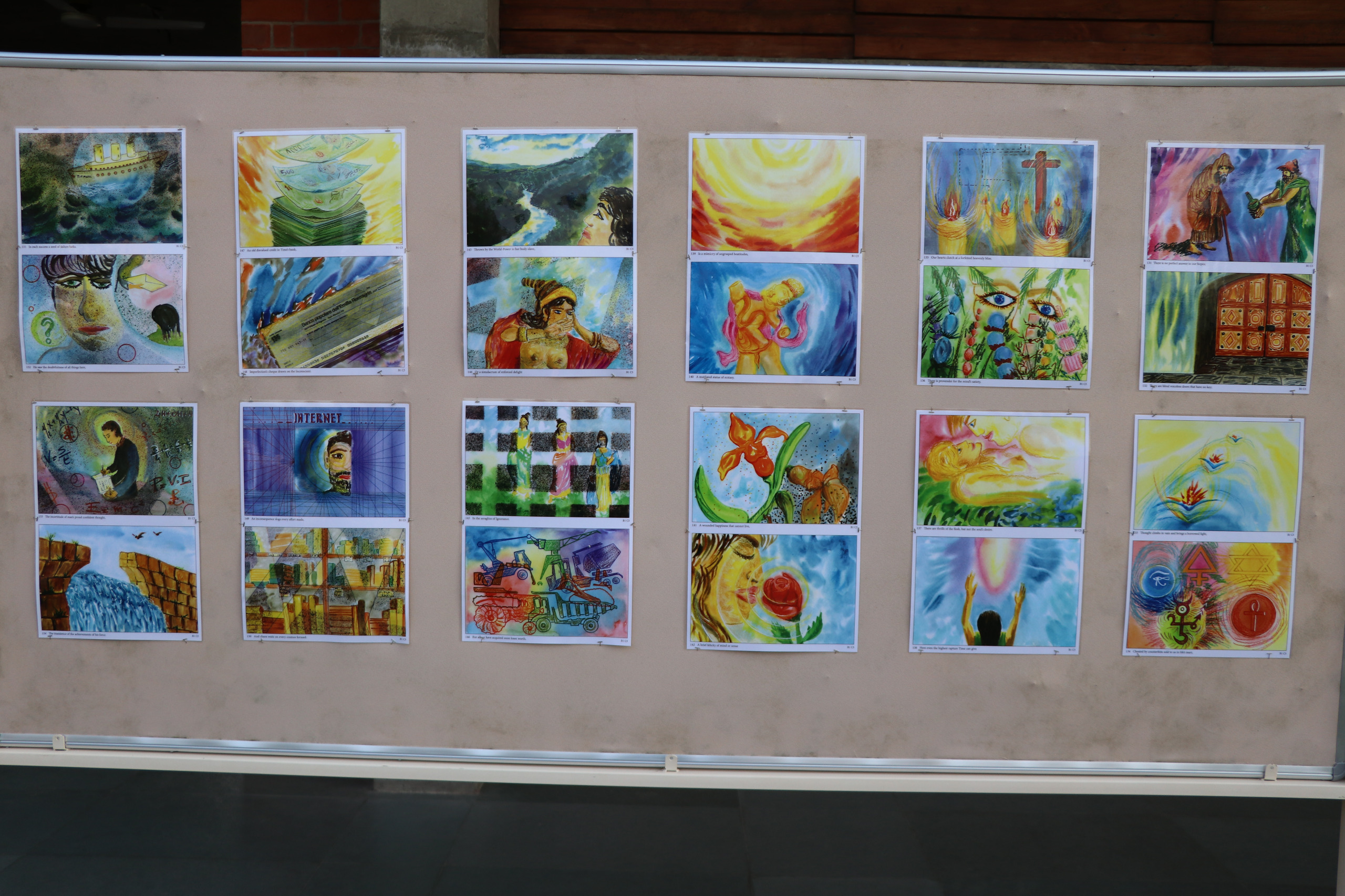- Lifestyle
- Italian Artist Unveils Spiritual Interpretation of Sri Aurobindo's 'Savitri' at AURO University
Italian Artist Unveils Spiritual Interpretation of Sri Aurobindo's 'Savitri' at AURO University

The School of Integral Education at AURO University is currently hosting a special exhibition that fuses European artistry with Indian spirituality, showcasing the evocative paintings of acclaimed Italian artist, Mr. Aghni (Tonioni Giovanni).
The collection, on display from November 19th to 21st, 2025, is a profound visual interpretation of Sri Aurobindo's spiritual epic, Savitri: A Legend and a Symbol.

Mr. Aghni, a devoted follower of Sri Aurobindo associated with the Sri Aurobindo Society, Italy, has translated the epic's vast symbolism and transformative message onto his canvases. His artworks serve as more than mere illustrations; they are invitations to experience Savitri as a path of inner awakening and mystical revelation.
"Mr. Aghni’s artistic journey reflects his inner dedication to Sri Aurobindo’s vision," said a representative from the School of Integral Education. "Through his evocative canvases, he brings alive the epic’s symbolism, mysticism, and transformative message."
This exhibition offers a unique cultural and spiritual opportunity, perfectly aligning with AURO University’s mission to foster holistic enrichment. It allows students, faculty, art enthusiasts, and the wider community to witness the powerful convergence of art, deep spirituality, and the principles of Integral Education.
-
What: Exhibition of Paintings Inspired by Sri Aurobindo’s Savitri by Mr. Aghni (Tonioni Giovanni)
-
When: 19th to 21st November 2025
-
Time: 10:30 AM – 5:00 PM
-
Where: Sri Aurobindo Integral Life Centre (SAILC), AURO University
About The Author

Lorem Ipsum is simply dummy text of the printing and typesetting industry. Lorem Ipsum has been the industry's standard dummy text ever since the 1500s, when an unknown printer took a galley of type and scrambled it to make a type specimen book. It has survived not only five centuries, but also the leap into electronic typesetting, remaining essentially unchanged. It was popularised in the 1960s with the release of Letraset sheets containing Lorem Ipsum passages, and more recently with desktop publishing software like Aldus PageMaker including versions of Lorem Ipsum.








.jpg)
















